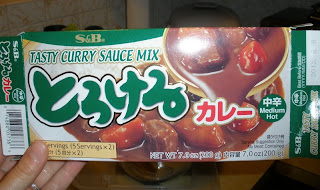This year, my family and I spent Christmas at my grandma's house in Sacramento. It was really fun. We played a ton of games, shelled 44 pounds of walnuts (a Christmas tradition,) recycled the classic jokes about being Portuguese, and talked about family members who are gone from this earth but not from our hearts. We ate till we couldn't see straight and reminisced about what it felt like to feel hunger. It was awesome.
Our family is not religious. My dad was raised Catholic and my sister and I were baptized but that's the extent of my religious upbringing. Though I'm sure my grandma would love it if we went to church with her, she understands and doesn't bother us about it. So, like a good Catholic, she went to mass on Christmas morning while the rest of us stayed behind and got breakfast ready. She came home, and we did our Christmas morning as usual.
During lunch, someone brought up the concept of regifting. We discussed whether it was good or bad and decided it can be a great thing if all the circumstances are right. First, the item being gifted has to be a wanted item. Shawn once got a package of socks from his grandpa that he had already opened and decided they didn't fit. It was clearly an afterthought, and therefore was a bad way to regift something. Second, the gift has to be from someone who either will never know of the regifting, or from someone who didn't put much effort into the gift and will not care if it was regifted. And lastly, it has to be an item that the recipient has a need for or can appreciate.
An example of the last two requirements is the Christmas gift that my sister's BF gave to his mother. The company that both he and Shawn work for gives out annual gifts to all its employees. Last year it was an ice cream maker, this year it was a box of a bunch of random locally made goods. There were cookies, toffee, and pretzels, as well as a hand-carved ruler and a picture frame. Do the boys have any need for this stuff? Not really. My sis's BF was already planning on getting his mother a gift of Seattle-based goods anyway so this was perfect. They printed a picture of the two of them and put it in the picture frame, wrapped the box, and away it went to Alabama where a very excited mother awaited.
See, regifting isn't always evil. It's good for the pocketbook and if the recipient is happy there is no harm done. An item that is not useful to one person is given a new life and adopted by someone else, putting some relief to the the ever-growing problem of us all having too much stuff. I can justify anything in the name of sustainability. And who says that you have to spend money to give someone something they can appreciate?
Ok, back to the Jesus thing. So right after this conversation about regifting, my grandma changed the subject by asking us why we have Christmas in the first place. (They had asked the kids this during mass that day.) We responded with, "well, it's Jesus' birthday." Then she asked us why we get gifts for someone else's birthday. After all us heathens looked at each other blankly for a few seconds she replied "because Jesus is very generous and he wants us to have his gifts."
To which my dad quickly responded with, "he just regifting."
Judging by the amount of laughter this caused, including from my grandma, I'm guessing this will become an annual family joke from here on out. Hopefully this explains away the title of this post, and if not, explains the kind of sense of humor my family appreciates.
Hopefully, your holiday season was filled with silly jokes and fun times as well.
 |
| An accurate portrayal of the chaos that ensues when 8 people try to shell 44 pounds of walnuts. |
 | |
| Awesome chicken quilt made by my Auntie Martha. Yes, my parents are dorks. That's why I am too. |


























































